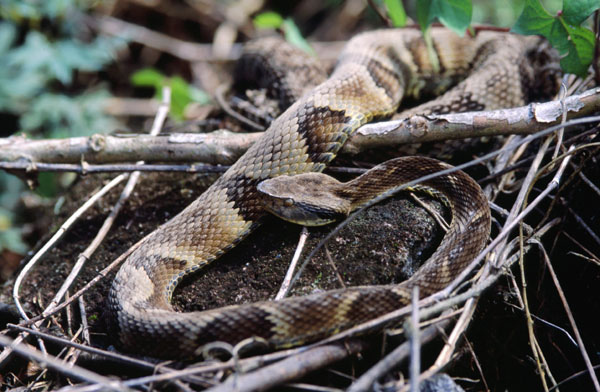Facts About Bothrops jararaca
Meet the Bothrops jararaca, commonly known as the jararaca or yarara. This highly venomous pit viper is indigenous to South America, specifically in southern Brazil, Paraguay, and northern Argentina. The name "jararaca" originates from Tupi words meaning "large snake" a fitting description as this species is a leading cause of snakebites in these regions.
The jararaca is a slender, ground-dwelling snake that can reach lengths of up to 160 cm. It possesses a distinct head with unique scalation and varied color patterns. One notable characteristic is a dark brown stripe on its head, bordered by a pale area. Additionally, it has a black tongue and eyes with irises ranging from gold to greenish-gold.
Depending on your location, the Bothrops jararaca goes by different names. In English, it's simply "jararaca." In Argentina, it is referred to as "yarará" or "yararaca perezosa." Various other names are used across Brazil, Paraguay, and Uruguay. Typically, these snakes inhabit deciduous tropical forests, savannas, and subtropical upland forests, often favoring open areas with nearby vegetation.
The venom of the Bothrops jararaca is extraordinarily potent and is responsible for a significant number of snakebites in southeastern Brazil. The venom can cause severe local swelling, bruising, and systemic bleeding. In more extreme cases, it can lead to life-threatening conditions such as shock and kidney failure. Interestingly, this venom has also been used to develop crucial medical drugs, such as angiotensin-converting enzyme (ACE) inhibitors, which are utilized to treat hypertension and congestive heart failure.

 Suriname
Suriname